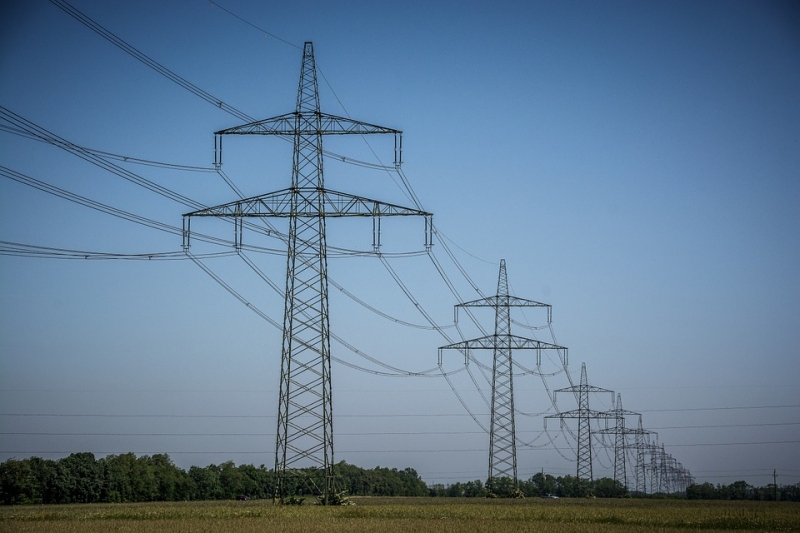On January 29, 2019, PG&E, the largest utility company in California, filed for Chapter 11 bankruptcy. The announcement comes after a spate of wildfires in California have been linked to the company’s equipment and hardware—including a PG&E-operated transmission tower that investigators suggest may have sparked the deadly Camp Fire in Northern California. While the corporation struggles to maintain its public integrity amidst financial reorganization and internal reshuffling, energy consumers and producers alike have been left with an uncertain future.
What does PG&E’s bankruptcy filing mean for the future of renewable energy development in California? This is of particular concern for the more than 350 energy companies that have struck up clean energy power purchase agreements (PPAs) with the corporation. Those PPAs—representing around $42 billion in investments—will more than likely be subject to attempted renegotiation and reduction in bankruptcy court as PG&E attempts to pull itself out of financial ruin. In the zero-sum game of offsetting its outstanding financial liabilities, the company may be leaving billions of dollars of solar and wind projects on the table—a move that would place a significant damper on California’s ambitious 100% clean energy goal by 2045.
Complicating the matters further, the Federal Energy Regulatory Commission (FERC) has subsequently announced that it will have “concurrent jurisdiction” over the matter of PG&E’s PPA negotiations — a potential win for the energy suppliers, as FERC’s announcement would require federal approval before PG&E is able to break or reduce its contracts if doing so would be harmful to the “public interest.” The announcement was met with legal opposition from the utility company who have since filed an injunction against the agency to block what they view as “unprecedented” interference by FERC. The U.S Bankruptcy Court is set to hold a hearing to resolve the jurisdictional matter in April.
 The regulatory dispute between FERC and PG&E leaves renewable energy suppliers in a precarious state regarding the legal framework that may be governing their PPAs. Perhaps most worrying for energy suppliers and renewable energy proponents is FERC’s sub-par track record in this field. In 2003, the agency failed to enforce a PPA agreed upon between NRG Energy and Connecticut Light and Power during NRG’s bankruptcy proceedings. In the 2004 case, Mirant v. Potomac Electric Power, a U.S. court of appeals decision concluded that FERC did not have the federal authority to overrule bankruptcy proceedings. The good news—for energy suppliers—is that PPAs were exempted from renegotiation during PG&E’s 2001 bankruptcy filing (although the utility’s financial commitments are far greater today than they were in that case). Nonetheless, FERC’s claim of concurrent jurisdiction may be one that hangs on a tenuous legal thread.
The regulatory dispute between FERC and PG&E leaves renewable energy suppliers in a precarious state regarding the legal framework that may be governing their PPAs. Perhaps most worrying for energy suppliers and renewable energy proponents is FERC’s sub-par track record in this field. In 2003, the agency failed to enforce a PPA agreed upon between NRG Energy and Connecticut Light and Power during NRG’s bankruptcy proceedings. In the 2004 case, Mirant v. Potomac Electric Power, a U.S. court of appeals decision concluded that FERC did not have the federal authority to overrule bankruptcy proceedings. The good news—for energy suppliers—is that PPAs were exempted from renegotiation during PG&E’s 2001 bankruptcy filing (although the utility’s financial commitments are far greater today than they were in that case). Nonetheless, FERC’s claim of concurrent jurisdiction may be one that hangs on a tenuous legal thread.
Beyond the future of renewable energy PPAs, PG&E’s recent filing may disrupt California’s burgeoning clean energy future at large. The utility’s bankruptcy complicates the substantial commitment it had made to develop charging infrastructure for electric vehicles—a commitment that was made in light of then-Gov. Jerry Brown’s plans to develop 5 million electric cars and 250,000 charging stations by 2030 and 2025, respectively. Given the lofty commitments that California has made to develop its clean energy industry, PG&E’s fiscal struggles could be detrimental to the state’s future climate goals.
In the wake of PG&E and FERC’s impending legal clash, renewable PPA holders and energy consumers alike have been left in legal limbo with many questions clearly remaining unanswered. How will authority be divided between the bankruptcy court and FERC in regard to the disposition of PPAs? What legal framework governs that renegotiation of these PPAs? How likely is it that PG&E’s PPAs will be reduced or rejected given the utility’s substantial financial commitments? What does this announcement mean for the future of California’s clean energy commitments and what solutions may exist should PG&E leverage its renewable energy commitments to offset its financial liability?
ELI, Farella Braun + Martel LLP, and leading experts in the field will be exploring these questions and more in an upcoming event and teleconference on Monday, March 18, from 5:00 pm to 7:30 pm PST.
The event will explore the implications of PG&E’s bankruptcy filing for the future of renewable energy development in California, the future of clean energy PPAs, and the legal framework governing potential PPA renegotiation.
This event is open and free to the public, but please register by March 14. Event details and RSVP information can be found here.
